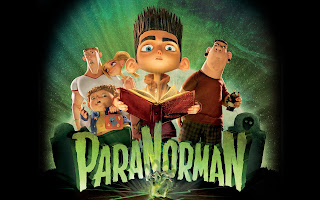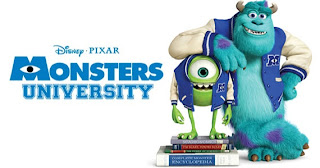Back in 2006, Nintendo put out Mario vs. Donkey Kong 2: March of the Minis for the Nintendo DS, which was quite the departure from Mario vs. Donkey Kong on the Gameboy Advance. The original game on the GBA was a spiritual successor to Donkey Kong on the original Gameboy, which is often dubbed Donkey Kong 94, in order to distinguish this 1994 release from the classic arcade game. These two games on the GB and GBA are brilliant puzzle-platformers, but when that DS game came out, the series changed to straight-up puzzle games, similar to Lemmings.
Many fans were disappointed with this change. I, for one, enjoyed the newer ones, but I have to admit that the series was getting a bit stale. Since MvD2, there have been three more games in the series. The latest, Mario and Donkey Kong: Minis on the Move, for the Nintendo 3DS's eShop, is actually quite different from the others since MvD2, despite being another straight-up puzzle game. The problem of staleness is not evident in this release. Minis on the Move mixes things up enough to feel fresh, and it's a smart, addictive puzzle game, despite some missed opportunity.
The major difference between this game and the few games before it is the angled, 3D view, replacing the on-the-side, 2D view. That may not seem like too big of a deal, but I'd say it gives the game an updated feel. The goal of this game is to place tiles on a board to form pathways for the series-signature minis (adorable little toys of Mario and co.) to use, in order to get them to the goal. Along the way, there are doodads to be collected which are unneeded for progression, but the game is definitely most enjoyable when attempting to collect everything on each board. These boards are very fun and challenging to solve. Completing a board with all of the doodads collected is very satisfying. Aesthetically, it's certainly colorful, certainly cute, and it looks nice in 3D. The music is fine, yet forgettable: If you'd like something to do while watching TV or listening to your iPod, this is an alright game to mute and play during. You'll just have to go without the satisfying victory music and crushing failure music.
There are four different variants on this basic design, each intertwined and each equally fun and well thought-out. One, entitled "Mario's Main Event," gives tiles for you to use mostly randomly. If you don't use the tiles given to you quick enough, your pipe of tiles will overflow and you'll fail. Things like bombs, which get rid of tiles on the board, and trash cans, which will take three unwanted tiles in your pipe, make things easier on you, but this mode remains very tense. It's tons of fun. It forces you to think quickly, and frantically tap your mini in order to get them to go faster. The "Giant Jungle" mode is basically the same, except that boards are massive and with much more to collect, making it ludicrously challenging, which makes this mode fun in its own right.
"Many Mini Mayhem" throws multiple Minis into the equation, and doesn't let you add any tiles onto the board. Instead, some tiles on the board can just be moved or manipulated. This mode is the most frantic of them all, and a real rush. Another is called "Puzzle Palace," which gives you all of the tiles you're allowed to use at the start. This mode forces you to carefully think things out, without pressure to do anything quickly. This difference in design means that this variant has to have more complex boards in order to be as challenging as the others, and it pulls that off.
Each mode ramps up the difficultly progressively by adding new tiles and obstacles into the equation, which means the game doesn't wear thin. "Mario's Main Game" has seventy levels, "Puzzle Palace" has eighty levels, and "Many Mini Mayhem" has fifty. If you collect all of the doodads on each of the levels of these three modes, you'll receive a star. The doodads on "Giant Jungle" are stars, and there are ten of these on each of the three levels for that mode. These stars, 230 possible, overall, go in a shared pool, which cleverly connects each mode. Once you reach certain amounts of stars, mini games and virtual toys are unlocked.
There are four mini games, and each has at least a few variants, which are individually unlocked. One is "Mini Target Smash," which is a pretty standard but enjoyable shooting range. Another is "Fly Guy Grab," which is definitely the worst of the bunch; not bad, but pretty mediocre. "Cube Crash" is the best, which is similar to the shooting range game, but instead of regular ol' targets, you smash large, three dimensional structures. The last is "Elevation Station," which is an alright on-the-side 2D affair in which you move around a mini to avoid bullet bills and collect coins. All of these, besides the last, look very striking in stereoscopic 3D. Overall these mini games are a great diversion, and progressively unlocking more variants on these four mini games really incentivizes collecting those doodads!
There is also a creation suite which allows you to create levels which can be uploaded online for anyone with the game to download [or stream] and play. Creation is simple, uploading is simple, and players others' levels is simple. Levels are organized into "Top Weekly," "Random," "Popular" and "Friends" categories. The only problem is that you can only make levels like the ones you'd find in "Mario's Main Game."
That problem is really one facet of a larger problem, which is the only one plaguing this game, and that's missed opportunity. Why don't the four modes have an identical amount of stars in them, making the experience even more cohesive? Unlocking the little "Toy Collection" toys and polishing them and looking at them is neat, but why can't I play as them? The best example of missed opportunity is how frivolous the top screen feels during the main game. All of the control for placing and moving tiles is on the bottom screen, and the entire board is depicted on the bottom screen, albeit with a minimalistic, uninteresting look. The top screen merely has a visually interesting look at the action, with no real useful information besides the timer, so you'll mostly never look at it. Why not make it less frivolous? None of these things really affect the quality of the game in any mechanical way, but these all just feel jarring. These are just nitpicks, but they all pile up into one big nitpick - there is clearly missed opportunity here.
But don't get me wrong: The game as it is, is great. The core mechanics are very clever, and it's a totally addictive experience. There's a lot to do, and none of it feels like padding, making this feel like a very substantial package. A very cute, substantial package, that is sometimes frantic, sometimes methodical, and always mentally stimulating. Even though there are things I wish this game would have done, I love it for what it is.
***
According to my 3DS's activity log, I played this game for 11 hours and 42 minutes. It currently costs $9.99, which is a fantastic price.














